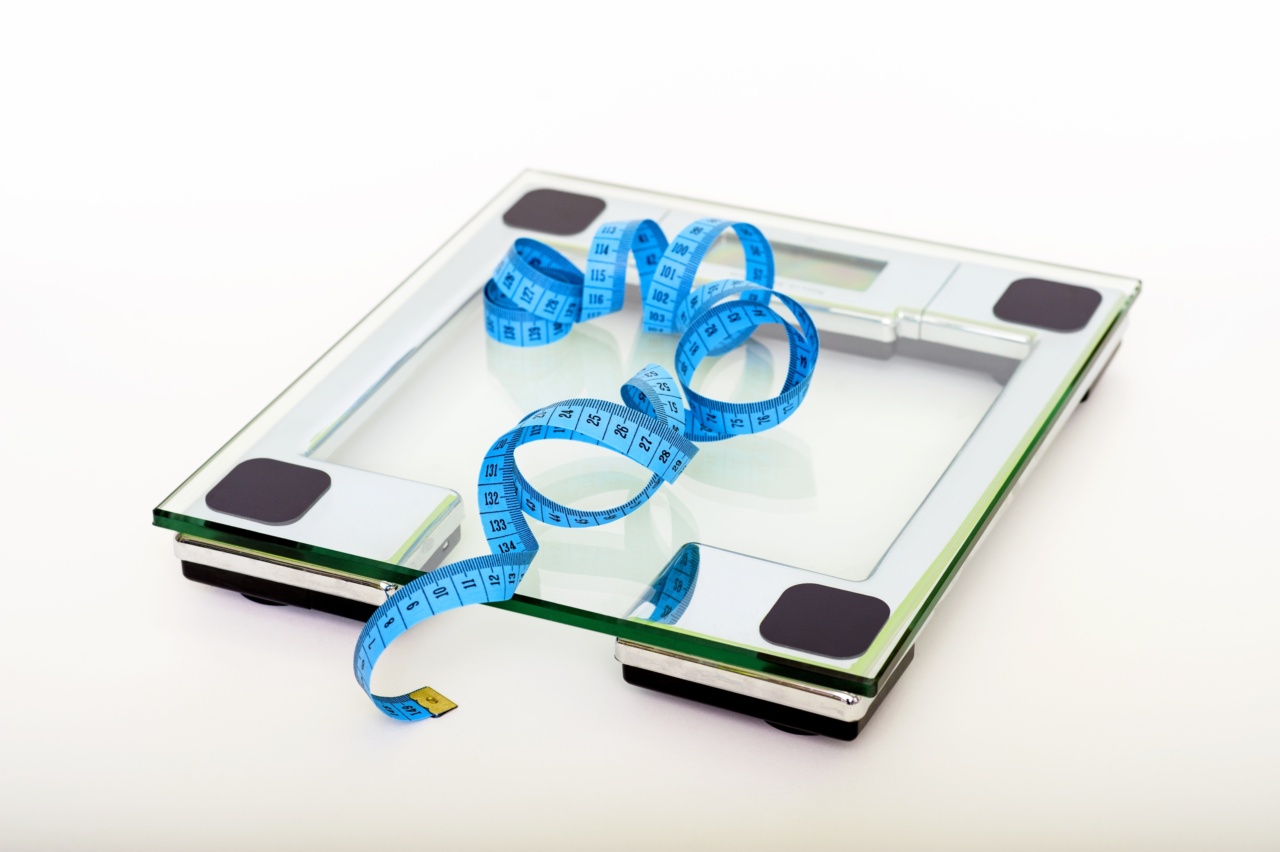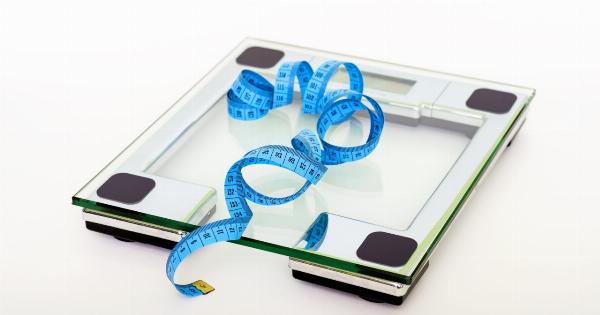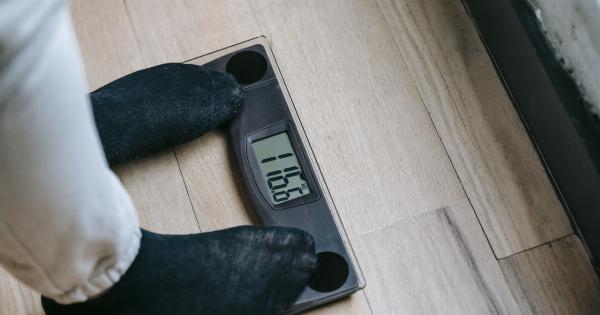Accurately measuring weight is important for various reasons, ranging from personal fitness goals to medical assessments. However, many people are not aware of the different methods available or how to obtain the most accurate measurements.
In this article, we will explore ten accurate ways to measure weight and discuss their advantages and disadvantages.
1. Digital Scale
A digital scale is one of the most common and convenient ways to measure weight accurately.
These scales provide precise measurements in pounds, kilograms, or stones, and they come with various features such as weight tracking, body mass index (BMI) calculation, and even connectivity with smartphone apps.
Advantages:.
- Digital scales are easy to use and widely available.
- They provide accurate and consistent measurements.
- Some models offer additional features to track progress and monitor other health metrics.
Disadvantages:.
- Cheap or low-quality digital scales may provide inaccurate readings.
- They require batteries for operation, which might need regular replacement.
- Some people may find it challenging to balance on a small platform.
2. Balance Scale
A balance scale, also known as a traditional or mechanical scale, uses a system of weights and levers to measure weight accurately. It typically consists of a platform and a beam with a sliding weight.
Advantages:.
- Balance scales provide precise measurements and have high accuracy.
- They do not require batteries or electricity.
- Some people find the classic design of balance scales aesthetically pleasing.
Disadvantages:.
- They are less commonly found in households and may be harder to locate.
- Balancing the scale and reading the weight can be challenging for some individuals.
- There is a risk of inaccurate measurements if the scale is not properly zeroed or maintained.
3. Body Composition Analyzer
A body composition analyzer is an advanced device that measures not only weight but also other important metrics such as body fat percentage, muscle mass, bone density, and water weight.
These devices use technologies like bioelectrical impedance analysis (BIA) or dual-energy X-ray absorptiometry (DXA) to provide comprehensive body composition data.
Advantages:.
- Body composition analyzers provide a more comprehensive assessment of overall health and fitness.
- They can help monitor changes in body fat percentage and muscle mass.
- Some models offer memory functions to track progress over time.
Disadvantages:.
- Body composition analyzers tend to be more expensive compared to traditional scales.
- They may not be as widely available for personal use.
- Some devices require professional calibration for optimal accuracy.
4. Doctors’ Office Scale
When visiting a doctor, they often have professional-grade scales that provide accurate measurements. These scales are typically calibrated regularly, ensuring their precision.
Advantages:.
- Doctors’ office scales are professionally calibrated for accuracy.
- Healthcare professionals can interpret weight measurements in the context of a person’s overall health.
- These scales may also be equipped with additional features such as BMI calculation.
Disadvantages:.
- Access to doctors’ office scales is limited to medical appointments.
- Some people experience anxiety or discomfort when weighing in a clinical setting.
- Measurements can vary depending on the time of day and clothing worn.
5. Smart Scale
Smart scales are digital scales that connect to smartphones or other devices via Bluetooth or Wi-Fi. They can sync weight measurements with dedicated apps or fitness trackers, enabling users to monitor their progress and analyze trends over time.
Advantages:.
- Smart scales provide accurate weight measurements with the convenience of wireless connectivity.
- They often offer additional features like body composition analysis and integration with health apps.
- Users can easily track and visualize their weight loss or fitness goals.
Disadvantages:.
- Smart scales may be more expensive compared to basic digital scales.
- They require a smartphone or compatible device to access advanced features.
- Some users may have privacy concerns regarding data sharing through apps or cloud storage.
6. Gym Scale
Gyms and fitness centers usually have scales available for members to use. These scales are often high-quality and calibrated regularly to ensure accuracy.
Advantages:.
- Gym scales are typically well-maintained and provide accurate readings.
- People who regularly exercise at the gym can easily track their weight alongside their fitness routine.
- Additional fitness-related information may be available, such as body fat percentage.
Disadvantages:.
- Access to a gym scale requires a gym membership.
- Measuring weight outside of gym visits may not be possible.
- Scale readings can still be influenced by factors like water retention or food consumption.
7. Weighing Chair or Bed
In certain medical or mobility contexts, specialized weighing chairs or beds are available. These equipment pieces are designed to measure weight accurately while accommodating individuals who have difficulties standing on a standard scale.
Advantages:.
- Weighing chairs or beds are suitable for individuals with mobility issues.
- They allow for comfortable and accurate weight measurements without the need for standing.
- These specialized devices are often found in hospitals, clinics, or long-term care facilities.
Disadvantages:.
- Access to weighing chairs or beds is limited to specific medical or healthcare settings.
- They are not widely available for personal use.
- It might be challenging to find weighing chairs or beds in some regions.
8. Professional Bod Pod
A Bod Pod is a specialized device that uses air displacement plethysmography to measure body composition accurately. It is often found in research or sports performance facilities where highly precise measurements are necessary.
Advantages:.
- Bod Pods provide highly accurate and detailed body composition data.
- They offer insights into not only weight but also body fat percentage and fat-free mass.
- These devices are commonly used in scientific studies and high-performance athletic training.
Disadvantages:.
- Access to a Bod Pod is limited to specialized facilities or research institutions.
- Measurements require specialized training for the operation and interpretation of results.
- Using a Bod Pod can be time-consuming and costly compared to other methods.
9. Wheelchair Scale
A wheelchair scale is specifically designed for individuals who use wheelchairs. These scales are built to accommodate the wheelchair’s size and weight and provide accurate measurements without the need for transferring to a different surface.
Advantages:.
- Wheelchair scales enable individuals with mobility challenges to accurately measure their weight.
- They eliminate the need for transferring from the wheelchair to another weighing surface.
- These scales are commonly found in medical facilities or healthcare settings.
Disadvantages:.
- Wheelchair scales are not widely available for personal use.
- Access is limited to medical environments or specialized healthcare facilities.
- They may require professional assistance for accurate measurements and interpretation of results.
10. Displacement Tank
A displacement tank, also known as a hydrostatic weighing tank, is a highly accurate method for measuring body composition.
It involves submerging the body in water and measuring the displacement to calculate body volume and, consequently, body fat percentage.
Advantages:.
- Displacement tanks provide one of the most accurate methods for measuring body fat percentage.
- They are commonly used in research or clinical settings.
- Hydrostatic weighing takes into account the body’s overall density, resulting in precise measurements.
Disadvantages:.



























